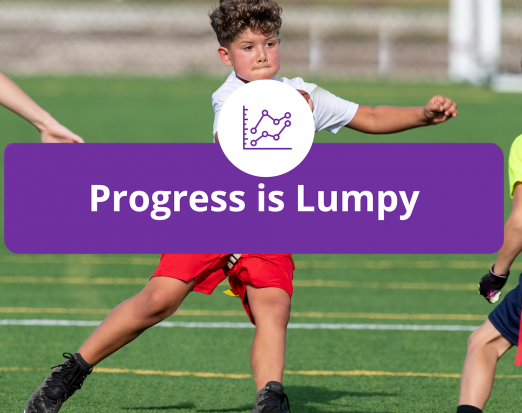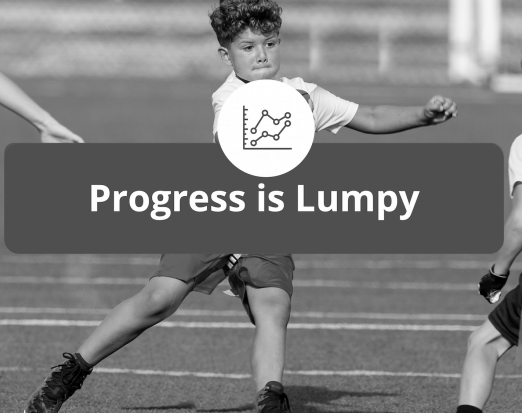Does Teaching Kids How to Fail Show Them How to Succeed?

The bonds teachers form with their pupils are often unforgettable. Nestled between the everyday drama of maths assignments, playground fights, missing PE kits and surly detentions, there are deep and enduring emotional connections - and a strong instinct to protect children from disappointments and setbacks.
Yet, teachers also understand how important it is for young people to experience failure. It may be a difficult way to learn, but it's also one of the most valuable. It is through failure - and disappointment - that children develop resilience. And resilience is central to success. When they accept the risk of failure, kids open themselves up to opportunities for progress.
Let's take a closer look at the role resilience plays in education and find out why it's a buzzword for schools in 2019.
Why All Children Deserve a Chance to Fail
In a society obsessed with gaffes and slip ups, it's imperative we teach children to respond constructively to failure. Firstly, because it's an inevitable part of life. Secondly, because fear of failure stymies confidence, independence and emotional maturity. Educational psychologist Michele Borba says:
"They [children] don't learn to bounce back because you told them they could but because they experienced it. Then, when the problems get really huge, they've got the gumption inside to realise 'Hey, I can do this!'"
Children who are resilient find it easier to accept criticism, solve problems, communicate their needs and, most importantly, pick themselves up after setbacks. They are more likely to be successful adults because they don't give up on the first try. For all these reasons and more, the Department of Education wants schools to make resilience building a priority.
The Impact of Resilience on Health and Wellbeing
Resilience plays an essential role in health and wellbeing as it increases willingness to try new things. It's a defining trait of youth athletes, for example, who must show grit and determination to succeed at competitive levels. One consequence of resilience building in schools is greater participation in extracurricular activities and more engagement in sports and physical activities.
This has a direct impact on pupils' general fitness, weight management and movement competence. Resilient children are curious about all the things their bodies they can do. They understand learning as a progressive process and success as an outcome of personal effort. They see setbacks not as an opportunity to quit but a chance to try again.
In 2019, we're making mindfulness - using self reflection and sensory awareness to nurture mental wellbeing - an integral part of our Healthy Schools Programme. Click the link to learn more about the tools and features on offer to members.
Here are three ways teachers can promote mental health and resilience in the classroom:
1. Promote self reflection with class discussions
Group discussions - particularly when they showcase suitable role models - are a great way for younger children to reflect on resilience and the role it plays in personal achievement. After listening to a story featuring a heroic and resilient character, encourage pupils to reflect by answering the following questions:
Who was the hero in the story? Why were they heroic/inspirational?
What challenges or dilemmas did the hero overcome?
What personal strengths did the hero show?
What important lessons did the hero learn?
Could you use the same personal strengths and lessons to overcome challenges in your life?
2. Bring examples of human resilience into the classroom
There are lots of opportunities to link resilience with personal success, achievement and social change. In history, science and english lessons, expand discussions about political leaders, innovators, inventors and literary luminaries beyond their accomplishments to also encompass the personal strengths that made them possible. Encourage pupils to see examples of their own strengths in these achievement stories.
3. Help children (and their parents) see failure as an opportunity
Even with the best of intentions, parents can sometimes curtail the development of resilience. In popular article Why Parents Need to Let Their Children Fail, Jessica Lahey asks 'how can teachers help children learn from setbacks when parents are desperate to protect them from every failure?' Teachers can help by:
- Fostering a classroom culture in which failures, setbacks and disappointments are an expected part of learning.
- Establishing an atmosphere in which pupils are celebrated for hard work, perseverance and grit, not just for getting the best grades.
- Holding students responsible for producing their own work and encouraging feelings of ownership and internal reward where appropriate.
- Educating parents with the knowledge that failure builds resilience: one of the most valuable character traits they can give their children.
4. Get Outside and Start Moving to Strengthen Neurons
Exercise is one of the best ways to strengthen neurons and increase the brain's plasticity, a key part of developing a growth mindset. In short, regular physical activity is a shortcut to better, faster learning. While team sports are one of the most popular ways for children to get active, physical activity doesn't need to be formal or organised. Playing tag, jumping ropes or just running laps around the playground is enough so long as those little hearts are beating fast!
If you need inspiration, Roll Yourself a Brain Break with our fun physical activity game. Or, check out our blog for more ways to get your pupils moving during lessons.





